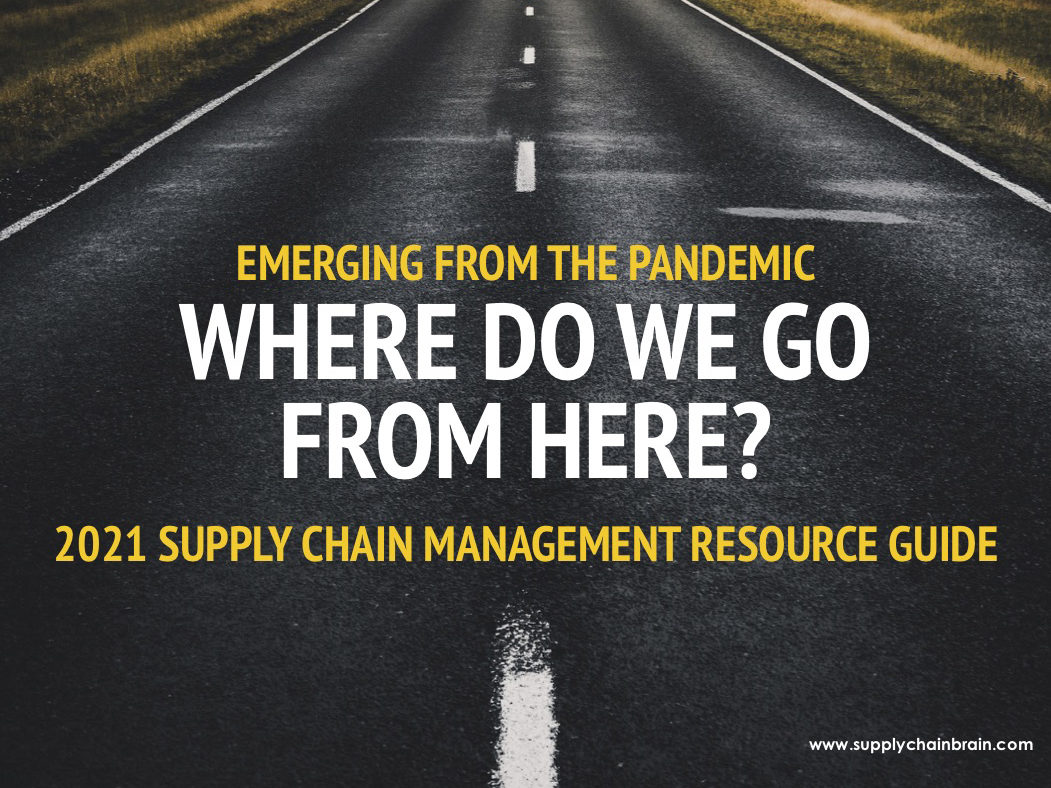
Visit Our Sponsors |
|
|
|
|
|
|
|
|
|
|
|
|
|
|
|
|
|
|
|
|
|
|
|
|
|
|
|
|
|
|
|
|
|
|
|
|
|
|

Exactly one year ago, in SupplyChainBrain’s 2020 Supply Chain Management Resource Guide, we showcased the predictions of multiple industry thought leaders for the coming 12 months and beyond. Together they painted a picture of a radically transformed supply-chain landscape, one dominated by innovative technology and business processes, aimed at helping global organizations adjust to changing consumer habits in the age of the internet. That part they got right. What they missed — what we all missed — was how fast it was all going to happen.
The unexpected development, of course, was the coming of COVID-19, which left no country, company or individual unaffected. (How “unexpected” it actually was is up for debate — many have adopted the term “black swan,” Nassim Nicholas Taleb’s coinage for a highly improbable but game-changing event, to describe the pandemic. But Taleb himself insists that it was really a “white swan” — something that was entirely predictable, if not inevitable.) The virus wreaked havoc with supply chains the world round, causing inventory gluts in some industries and severe shortages in others. Virtually overnight, consumer shopping behavior shifted into panic mode, temporarily resulting in empty store shelves for basic household items. Government-imposed lockdowns and directives for “sheltering in place” forced us all to rely more heavily on purchases over the internet. Many who wouldn’t previously have considered buying staples such as groceries online grudgingly made the adjustment — then discovered the convenience of ordering stuff with the click of a button, and having it delivered within a day or two to the doorstep.
A good number of those consumers won’t be returning to their old shopping habits when the pandemic subsides. To be sure, most won’t eliminate trips to the store entirely. But they’ll continue to make heavy use of e-commerce, and retailers will be forced to adjust inventory, stocking and distribution strategies accordingly. Further innovations will be required to address the trend of remote work, and its impact on business operations over the long term.
Much of this was foreseen by the experts who graced the pages of last year’s Resource Guide, but it’s all happening much more quickly than anyone expected prior to the pandemic. Trends that were supposed to play out over several years have taken hold in a matter of months. According to Statista, e-commerce’s share of total U.S. retail sales rose 14.3% in the third quarter of 2020, compared with 11.1% in the same quarter of the previous year. For global supply chains, there’s no going back. To borrow a tagline from any number of movie sequels, 2020 was The Year That Everything Changed.
Which raises the inevitable question: Where do we go from here? How will we cope with a pandemic that’s still raging, as well as its eventual aftermath? Once again, we offer the insights of multiple experts from all parts of the supply chain. They examine a wide variety of industries, strategies, and global macro-trends, with a particular focus on cutting-edge technology.
Last year, we wrote of the need for new tools for ensuring excellence in supply-chain management. That’s still relevant. But such tools must be wielded in a manner that creates agile and resilient organizations. Success today depends less on knowing the future than on the ability to adjust to what actually happens. That’s the key to surviving — and thriving — in an unpredictable world.
—Bob Bowman is editor-in-chief of SupplyChainBrain
RELATED CONTENT
RELATED VIDEOS
Timely, incisive articles delivered directly to your inbox.






